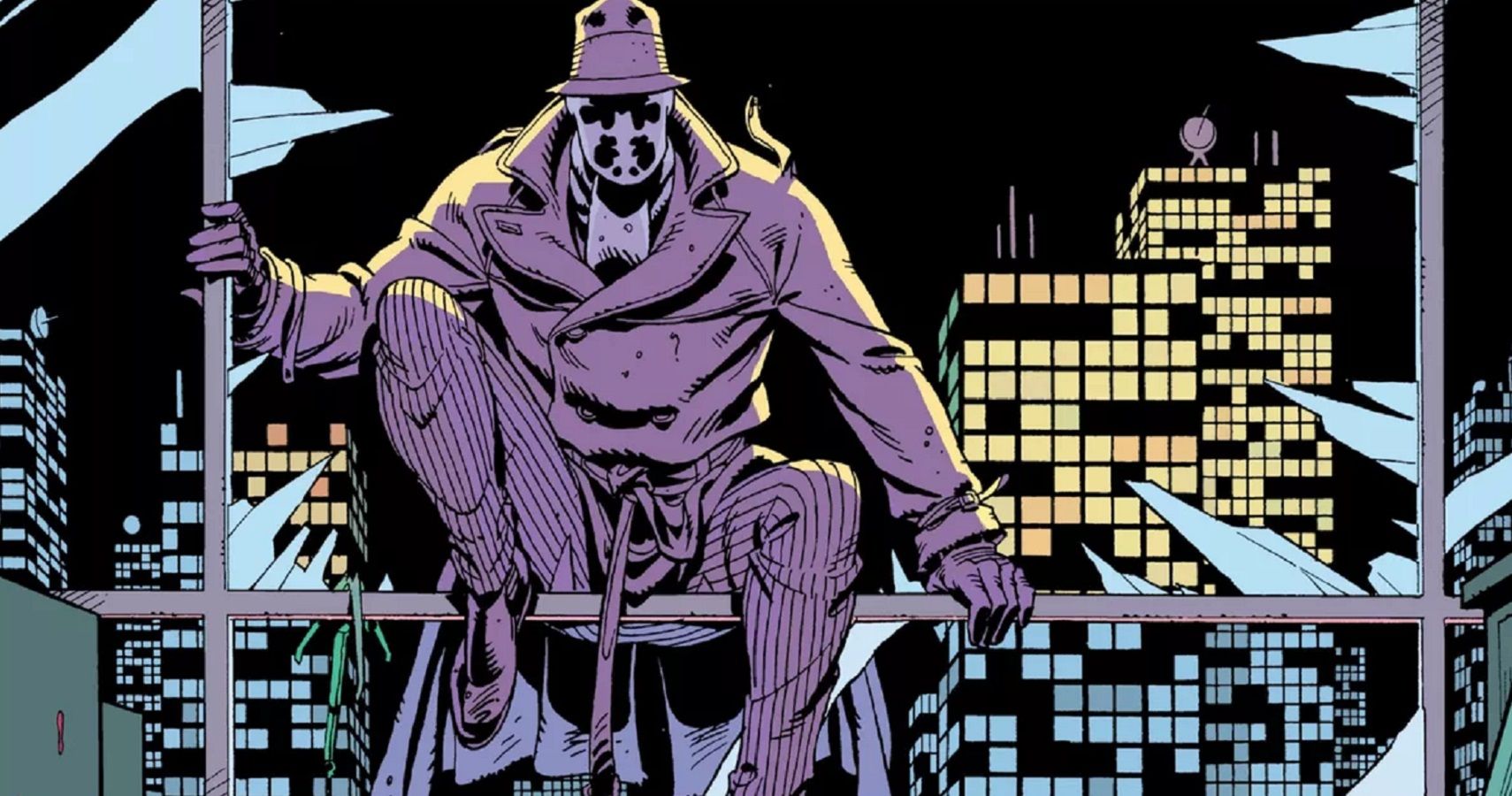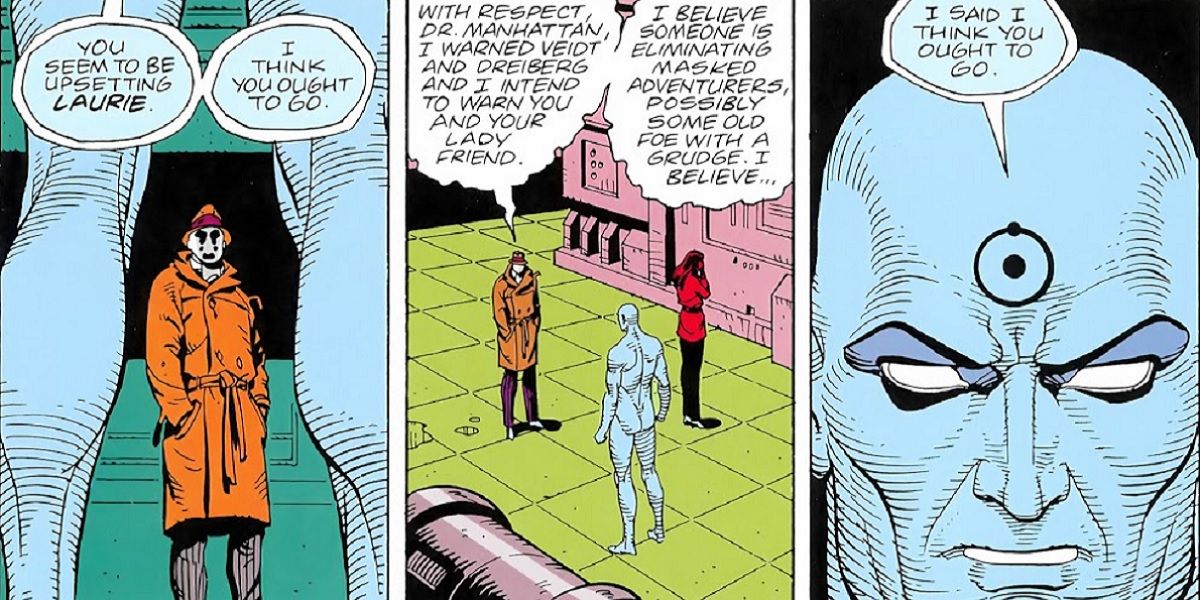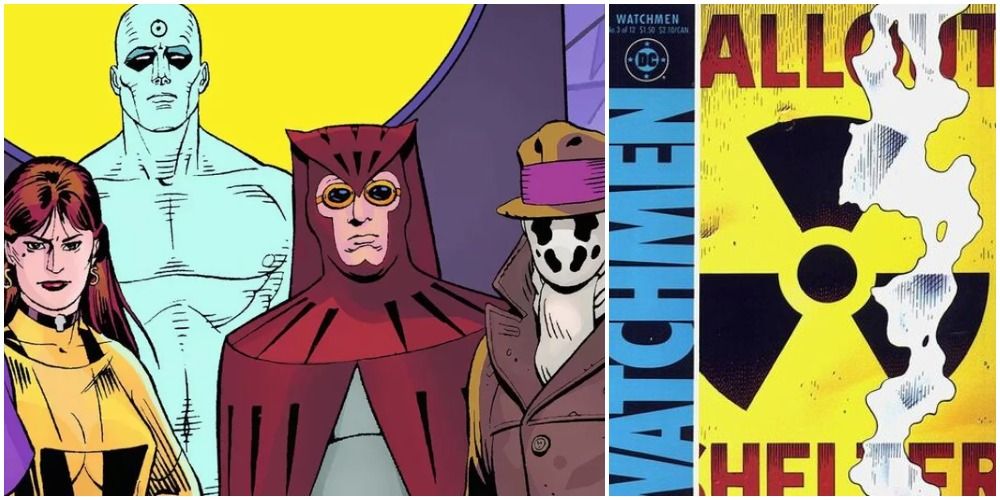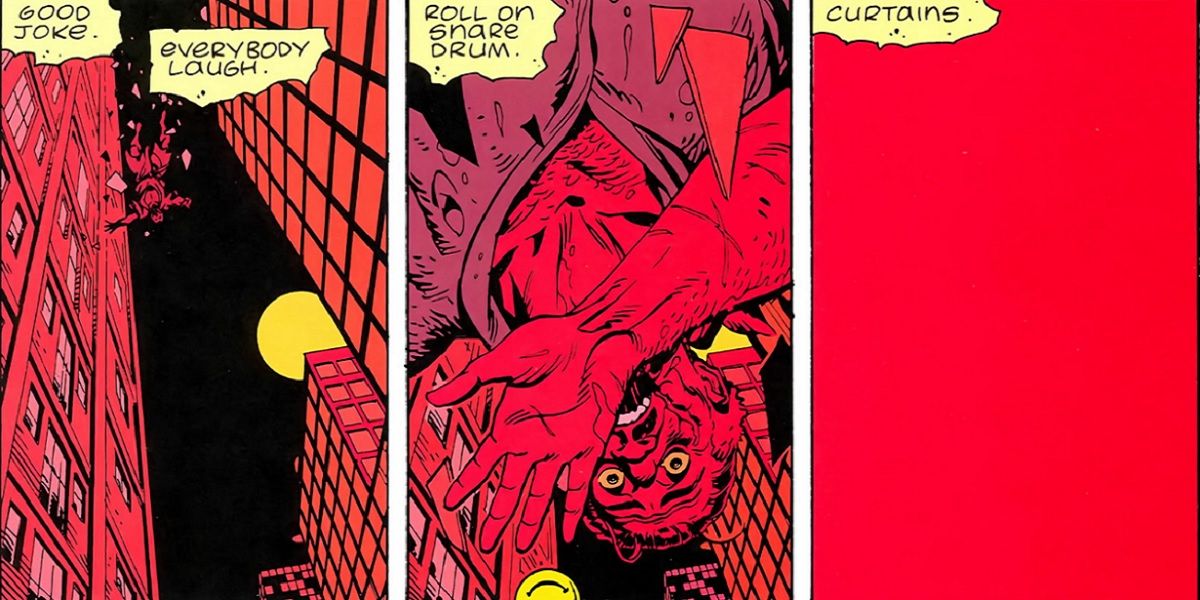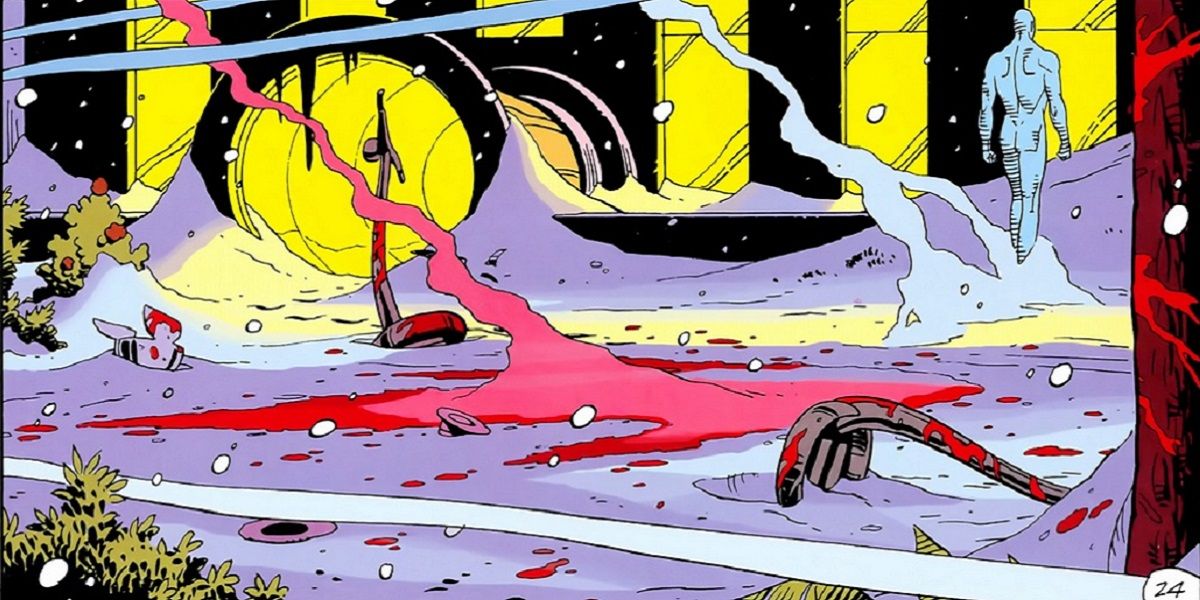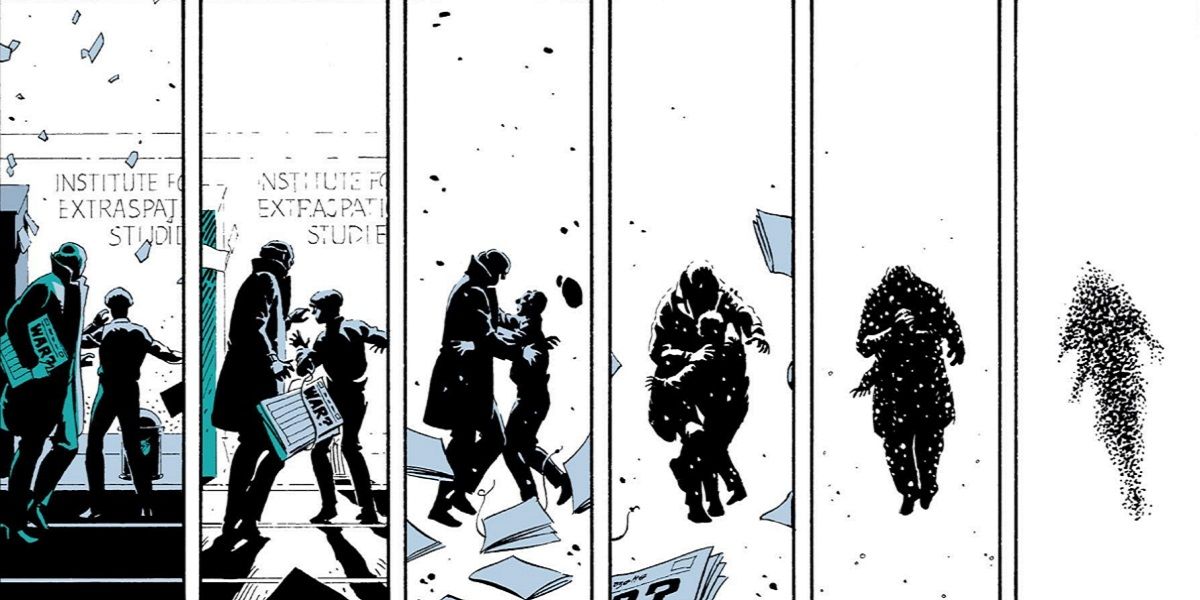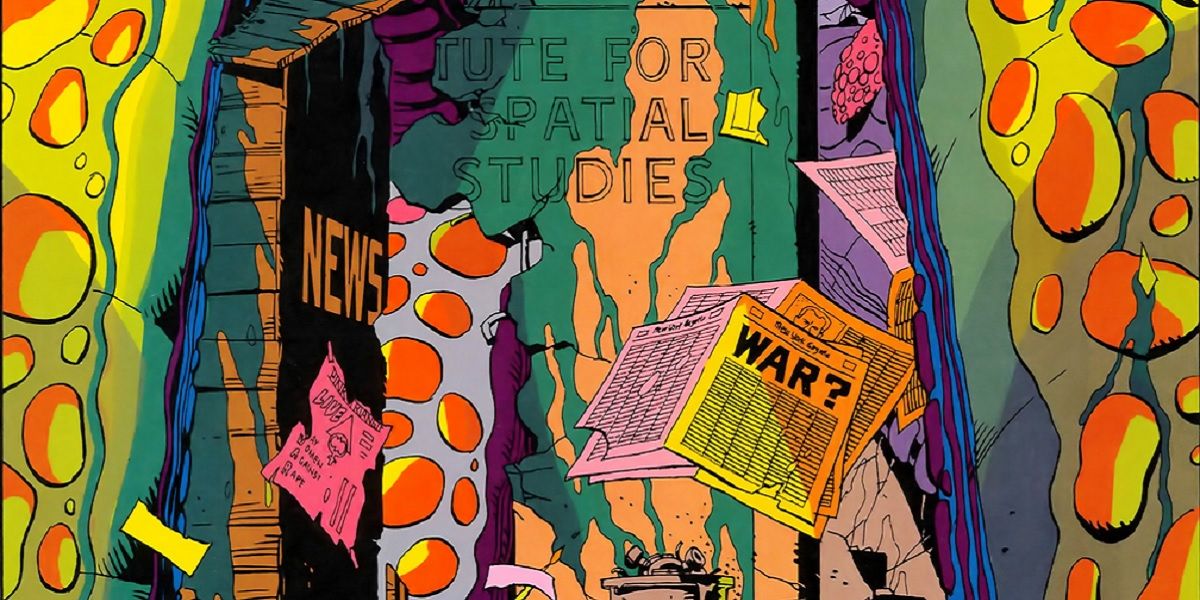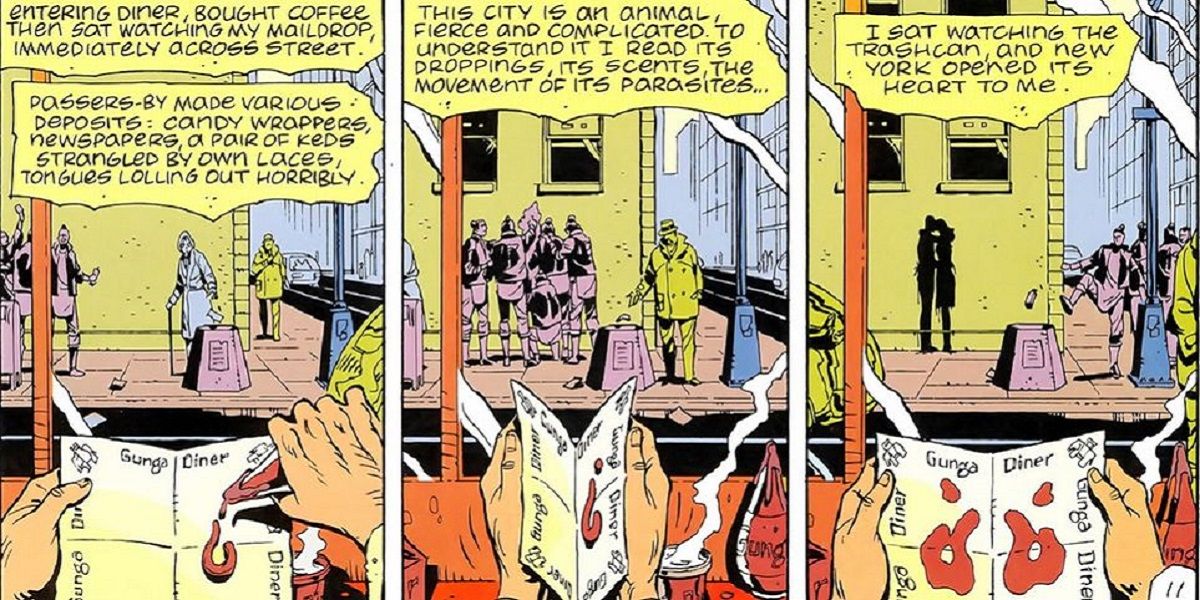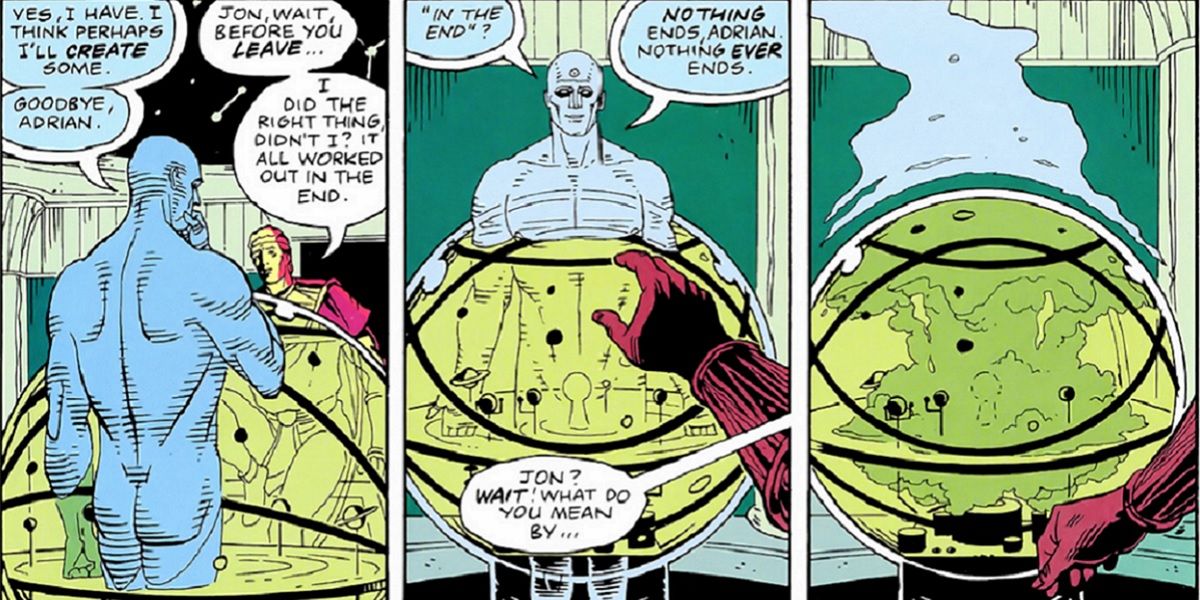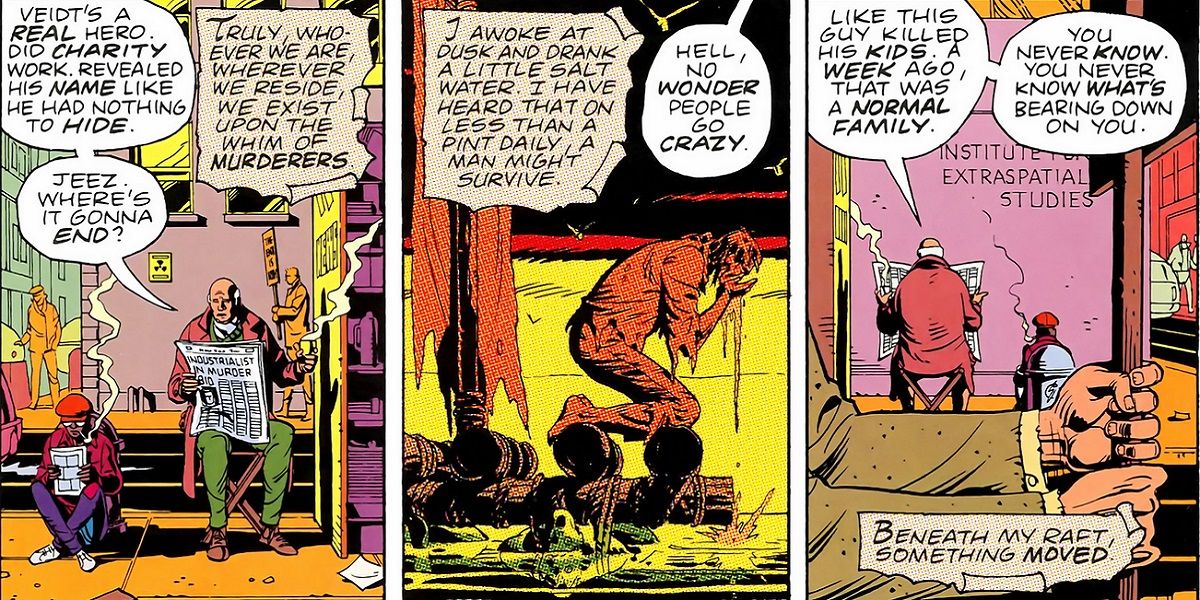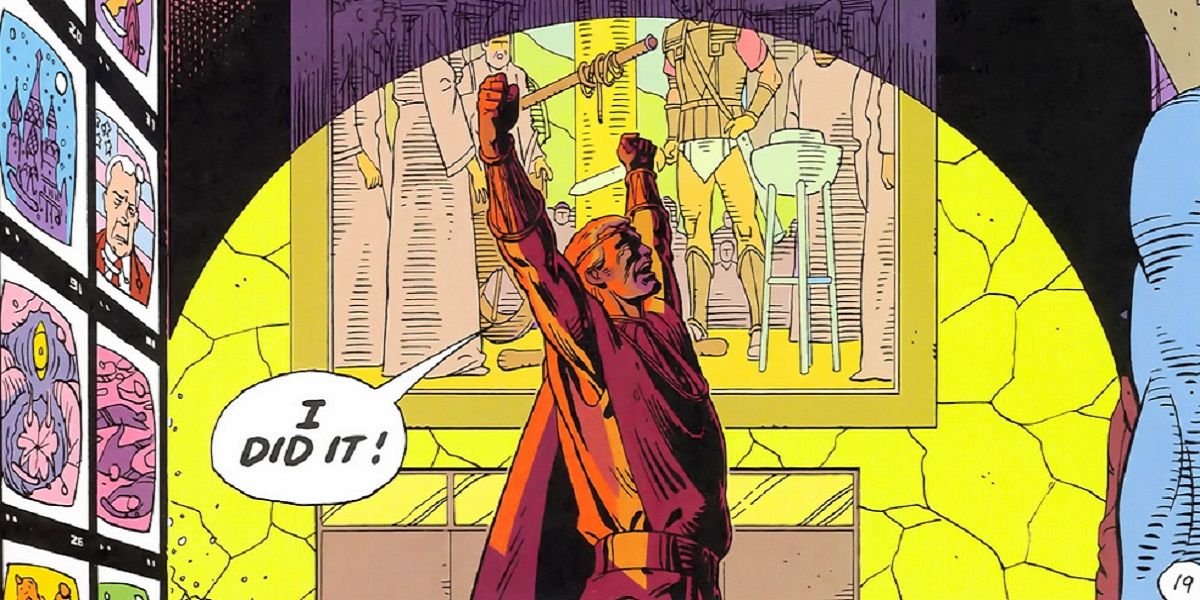1986's "Watchmen" is generally acknowledged as among the greatest comics ever written, with good reason. The story, written by Alan Moore, is a deconstruction of the entire comic genre: its themes, characters, and style, all while being itself a comic, beautifully drawn by Dave Gibbons and colored by John Higgins. "Watchmen" is unadaptable because it is exactly perfect as to what it needs to be; there is not a better medium for exploring the impact and ideas of comic books than a comic book. It was made and designed as such. The intricate detail put into the series is impossible to list in one go, but here are a few great entries to reflect on. Of course, there will be massive spoilers.
10 Unique Speech Bubbles
This is a pretty obvious entry, but it can't be overlooked. A few of the characters in the comic have a distinctive speech bubble and font style to suit their tone. Doctor Manhattan has a large blue bolded font, the only colored one amongst the group. Rorschach has a scratchy and crude looking font, and when his mask is removed, it is smoother, with the former look intending to capture the sound of a muffled voice or Rorschach changing his voice inflection while in disguise.
9 Fallout Shelter
There's a lot going on on the third cover page of "Watchmen." The words "Fallout Shelter" appear on the page with a nuclear symbol between the words. However, the "F" in "fallout" is not visible, nor is the "S" in "shelter," so it reads instead as "allout helter," meaning complete chaos. Suiting, seeing as the impending threat of nuclear war would do that. Likewise, a puff of smoke covers part of the words, so it can also be read as "all hel," or, "all hell," such as all hell breaking loose. And of course, the smoke is shaped like a skull.
8 The Comedian And Pagliacci's Stories
"Watchmen" is filled to the brim with symmetry and parallels, and one of the best instances is when Rorschach recounts the Pagliacci joke whilst reminiscing on the legacy and murder of The Comedian.
The segment is gorgeously and intensely colored, and each panel fits perfectly with each line of the joke as Rorschach tells it -- a happy clown on the outside who was suffering on the inside.
7 The Hidden Smiley Faces
One of the main symbols used throughout the series is the iconic bloody smiley face. It was formerly the badge/button belonging to The Comedian. And of course, it is hidden dozens of times throughout the comic, either as the smiley face or its accompanying bloodstain. It is seen in the face on Mars (which is actually real), the bloody mess the dogs leave behind when Rorschach kills them, Owlman's goggles, and many more times. But the best one would have to be in the panel following Rorschach's demise, in which it can be seen in the yellow tunnel leading to Ozymandias' lair.
6 Protecting The Kid
There are several side stories in "Watchmen," and one such tale features a newspaper vendor and a street kid who continually tangle with each other. Towards the end of the comic, they begin to ease up towards each other and discover that they even have the same name: Bernard. However, shortly following their newfound budding friendship, Ozymandias' plan goes into motion, wrecking Manhattan. In a futile attempt, the older Bernie tries to shield the younger one. It's somewhat tragic to see the same futility of being a good person in a relentlessly cruel world. The time put into the side stories really helps bring home the fact that the 3 million people Ozymandias killed were all individual people with entire lives, not just statistics.
5 The Squid's Surroundings
After Ozymandias' ludicrous plan works, the massive squid he engineered is left in the wreckage of Manhattan. The panel that reveals its face and the chapter title is chock-full of things to notice. A wrecked sign has color highlighting a few of the visible words, which read "Or al dies," but with the yellow paper dropped next to it, it completes the word "all." There is yet another hidden smiley face, in a "sparkplug hydrant" on the bottom of the page. And there is a vicious little dad joke on a newspaper that reads that Adrian Veidt "...will give you bodies beyond your wildest imaginings," a physical fitness ad which has aged like very red wine.
4 Rorschach's Origins
When Alan Moore was first conceptualizing "Watchmen," he wanted to use several Charlton Comics characters that DC (responsible for publishing "Watchmen") had acquired. As he could not use them because "Watchmen" was going to be pretty graphic and risky, he loosely based most of the characters off of existing characters instead.
Most notably, Rorschach was based on Steve Ditko's character "The Question," which was alluded to in the panel showing Rorschach re-creating his mask's design, with the sauce shaped like a question mark.
3 Doctor Manhattan Poofs Away
This collection of panels works for 2 reasons. The first is when Doctor Manhattan teleports away after discussing the new utopia Ozymandias has attempted to create. He leaves a smoke puff behind in Ozymandias' solar system sphere, resembling a mushroom cloud in a psychic's crystal ball, an ominous sign of what could come in the future. The other reason the panels are great is simply due to the fact that Gibbons found a way to hide Doctor Manhattan's hugely iconic blue... manhood, and still find a shape to resemble it. It's a pretty cheeky move.
2 Fearful Symmetry
"Fearful Symmetry" is the title of the fifth chapter in "Watchmen," and an analysis of the artwork in that chapter alone could fill several lists. There are so many breathtaking panels and loads of ingenious design choices, so it's only fair that the entire collection takes up a spot on the list rather than hog every entry. There is visual symmetry throughout the 9-panel structure "Watchmen" utilizes, and the pages, panels, and colors all get symmetrical treatment in some way, shape, or form. There are also fantastic transitions between the events of "Watchmen" and the events in "Tales Of The Black Freighter," the comic that the young Bernie reads, such as the change from the pirate holding the raft's mast to the person carrying "The End Is Nigh" sign. Likewise, the panels featuring Ozymandias fighting off his (literally his) assassin are a fantastic display in the power of comic panels.
1 I DID IT!
In the panel to end all panels, an elated Ozymandias celebrates his carefully calculated and deadly plan to save the world from nuclear annihilation. After noticing the world's reaction to an apparent alien attack, he thrusts his arms into the air and proclaims "I DID IT!" Behind him is a portrait of Alexander the Great severing the Gordian knot - an easy-to-miss but highly appropriate historical reference.
But the best part of the panel is that Ozymandias' pose, contrasted with the yellow spotlight in the background, resembles that of a clock. And throughout the comic, a Doomsday clock was shown ticking closer to midnight, signifying the end of the world. And with the posturing and visual length of his arms, Ozymandias' pose shows that he merely set the clock back a moment rather than completely reset it or get rid of it entirely. The amount of intricate detail and style, and commentary on comics while being the same medium it is critiquing is precisely why "Watchmen" can never be adapted to any other platform. That being said, the HBO sequel series was pretty stellar.

